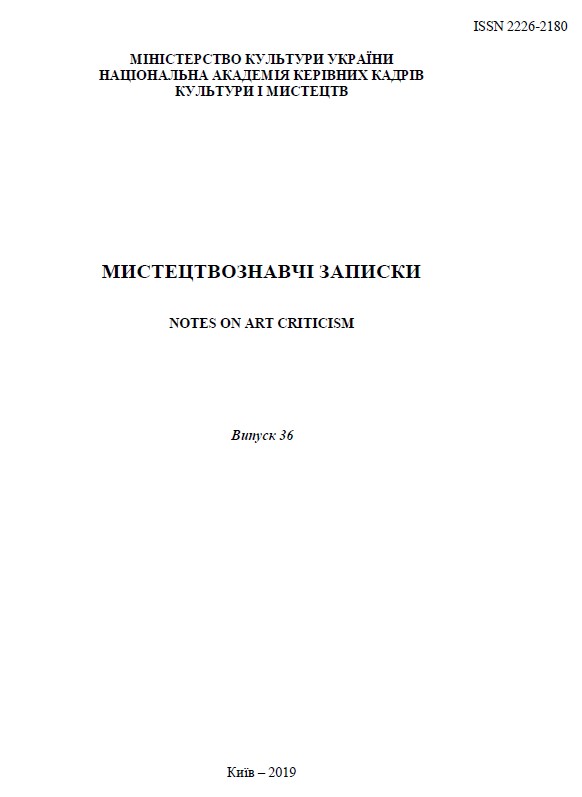УВЕРТЮРА «РУХ ВІТРУ» ГО ВЕНЬЦЗІНА ЯК ЗРАЗОК ІННОВАЦІЙНОГО ПІДХОДУ ДО КИТАЙСЬКОЇ ПРОГРАМНОЇ УВЕРТЮРИ
OVERTURE “RIDING ON THE WIND” OF GUO WENJING AS AN EXAMPLE OF INNOVATIVE APPROACH TO CHINESE PROGRAMMATIC OVERTURE
Author(s): Cheng YunjiaSubject(s): Cultural history, Customs / Folklore, Music, Transformation Period (1990 - 2010), History of Art
Published by: Національна академія керівних кадрів культури і мистецтв
Keywords: Chinese folklore; jingoism; programming; the performability principle; the leitrhythm of Riding on the Wind; reprising;
Summary/Abstract: The purpose of the article. The article aims to derive systematic features of symphonism as a method of artistic thinking and the national peculiarities of Chinese symphonic music for a European orchestra. The methodology of the research lies in using holistic, systematic, comparative, and historical methods of musicological analysis. The scientific novelty of the work is that the author first introduces the work in the genre of the Chinese programmatic symphonic overture to the Ukrainian scientific conversation and attempts to highlight the musical style features of Guo Wenjing. Conclusions. The Overture of the Wind Movement by Guo Wenjin is a striking example of the genre of program symphonic overture of the modern Chinese composing school of the second half of the 1990s. The features of program symphony are expressed in the program title (the symbolism of the image of the wind, which in Chinese mythology is associated with the God of the Wind Fei Li), the principles of thematic development - motive development; figurative, textural, timbral contrast of sections, dialogue between orchestra groups as a sign of concert principles, re-intonation (intonational rethinking of heroic marching and contemplative pentatonic variants of the theme, combining in a new tutti sound in code), or having unifying ones the leitrhythm of the "wind movement," the leitintonation (a melodic line built on the Tertiary chants) and thematic reprise in sections of sonata-allegro. Also of particular importance are style allusions with the works of J. Williams, GF Handel, L. Beethoven, PI Tchaikovsky, M. Ravel, K. Orf, M. Glinka, MA Rimsky-Korsakov as a personification of dialogue.
Journal: Мистецтвознавчі записки
- Issue Year: 2019
- Issue No: 36
- Page Range: 235-240
- Page Count: 6
- Language: Ukrainian

